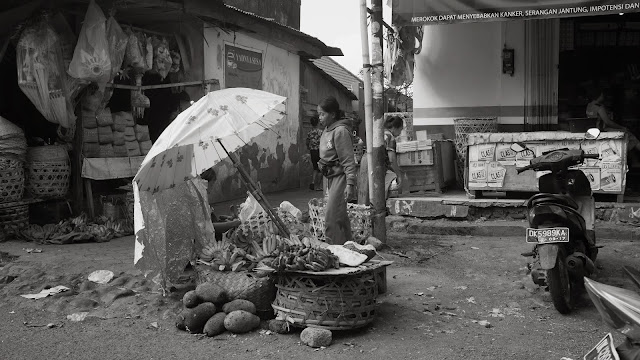DAY 8 8.11
After Saraswati day, today is the day to bless water. Balinese usually go bathing in the sea. Every beach we went to was so crowded. And it’s interesting to see how a lot of Muslims also came just to walk on the beach. They are probably not locals, maybe from other islands like java. Shortly after watching how people bathe, wedrove to Lake Bratan, the second largest lake in Bali. Lake Bratan is known as the Lake of Holy Mountain and temple of Pura Ulun Danu solemnly guards the lake. Pura Ulun Danu is an important water temple in Bali, also a famous tourist site due to its historical value. Because the family we’re staying were having a ceremony there, we had the good fortune to enter the temple next to the lake, which was not allowed for all the tourists to enter. After the ceremony, Pak showed us around and explained all the details on the structure if the architecture, history of the temple and Balinese religion. This is the very first experience I had in a place with tourism since the trip started, before we were all visiting places with just Balinese. And because Pak made a detailed explanation on how the rituals related to everything we saw, I learned so much and started to have a deeper understanding about Hinduism in Bali, different from what I’ve learned in class about Hinduism in India
Near lake Bratan, there is a market where they sell fresh fruits and other goods. Because of the high altitude and climate, fruits and vegetables grow well here. Overall, I just couldn’t describe how perfect everything is on top of the mountain – the weather, the food and the temples…
At night I had my first gamelan lesson with Pak De, uncle of our Balinese family. The entire family are not just dancers, most of them can sing in the ancient language, i kawi and play gamelan music very well. I learned to play gender ( pronounced with a hard G)., an instrument constructed from a wood frame and ten rectangular, bronze keys suspended by strings. Gamelan gender wayang is considered one of the most complex genres of Balinese music and the sound it makes is very simple and calming. Because of my lack of previous instrument learning experience, I repeatedly practiced the easiest piece for a long time. It’s such an enjoyment to play gender because I almost felt like meditating.
That night before I fell asleep, the “ding” and “dong” sound of gender kept whirling in my head and I knew there’s another day of adventure waiting for me ahead.
smelling vanilla
Ms. Van Gelder taking pictures
_________
learning Gender

















































